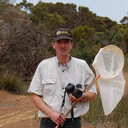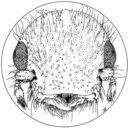Potential economic pests of solanaceous crops: a new species of Solanum-feeding psyllid from Australia and first record from New Zealand of Acizzia solanicola (Hemiptera: Psyllidae).
Mots clés
Abstrait
Acizzia credoensis sp. n. is described from a single population on the native plant, Solanum lasiophyllum, from semi-arid Western Australia. The host range of Acizzia solanicola Kent & Taylor, initially recorded as damaging eggplant, S. melongena, in commercial crops and gardens and on wild tobacco bush, S. mauritianum in eastern Australia, is expanded to include the following Solanaceae: rock nightshade, S. petrophilum, cape gooseberry, Physalis peruviana, and an undetermined species of angel's trumpet Brugmansia and Datura. New Zealand specimens of A. solanicola collected in early 2012 from S. mauritianum are the first record for this species from outside Australia, and possibly represent a very recent incursion. The potential for the solanaceous-inhabiting Psyllidae to vector Candidatus Liberibacter solanacearum, an economically important plant pathogen, on native Australian Solanaceae is discussed. The occurrence of A. credoensis and A. solanicola on native Australian Solanum supports the Australian origin for the solanaceous-inhabiting Acizzia psyllids.



